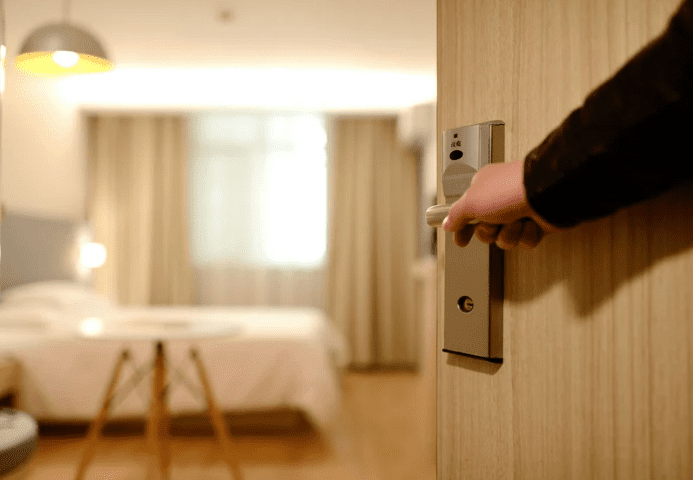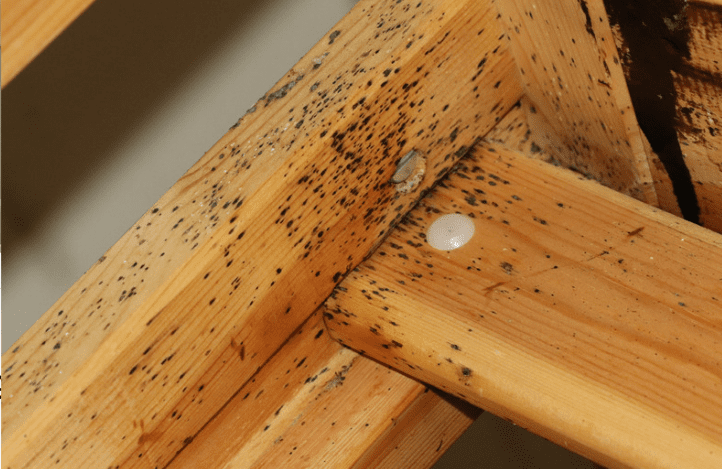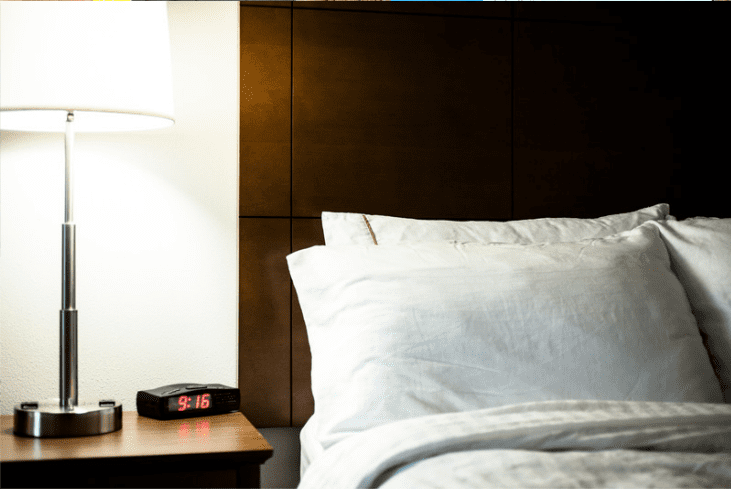Introduction
Bed bugs are small, elusive insects notorious for infesting places where people sleep, especially hotels. Their bites are not only itchy and uncomfortable but can also lead to health problems if left untreated. Ensuring a bed bug-free stay in a hotel is not just a matter of comfort. It’s a crucial aspect of maintaining your well-being during travel. There are rising reports of bed bug infestations across various hotels. So, there is a compelling need to understand how to check hotels for bed bugs effectively. In this comprehensive bed bug guide, we will take you through the vital process of inspecting hotels for bed bugs. Ensuring you can rest easy during your stay.
Recognizing the importance of this issue, institutions such as the Environmental Protection Agency have published valuable resources on bed bugs. With information including their appearance, habits, and the risks associated with infestations. According to the EPA, bed bugs are nocturnal creatures. They’re primarily active at night, and their presence is not determined by the cleanliness of the living conditions. Thus, even the most well-maintained hotels can fall victim to bed bug issues. By understanding their nature and employing the proper inspection techniques detailed in this guide, travelers can minimize risks and enjoy a serene hotel experience, free from the worry of bed bugs.

In the following sections, we will delve into the specific behaviors of bed bugs in hotels. The pre-arrival preparations you can make, and a step-by-step guide to performing a meticulous inspection. Whether you’re a seasoned traveler or planning your first trip. This guide aims to equip you with the knowledge and skills needed to effectively identify and avoid bed bugs. Prepare yourself for a detailed exploration of how to check your hotel for bed bugs. It is vital to ensure a comfortable and health-conscious stay in any hotel.
Understanding Bed Bug Behavior in Hotels
One of the essential steps in preventing an encounter with bed bugs in hotels is understanding their behavior. Bed bugs are intelligent creatures, known to hide in various unsuspecting places within a room. While many associate bed bugs with beds, they are equally likely to be found in furniture, crevices, upholstery, and even power outlets. Recognizing these typical hiding spots is paramount to a thorough inspection.
In hotels, bed bugs are drawn to areas where they can feed on human hosts without being detected. Their feeding patterns often follow human sleep cycles, making hotel rooms a prime habitat. According to the CDC, bed bugs feed on blood. Their bites can cause a range of health effects, including skin rashes, allergic symptoms, and even psychological problems. Knowledge of these patterns and signs of infestation. Signs will be small blood stains or shed skins. Knowledge will empower you to conduct an effective examination of any hotel room.
In the following sections, we will guide you on how to leverage this understanding of bed bug behavior. You will be able to to make proper pre-arrival preparations and execute a meticulous inspection. From identifying the common mistakes to avoid to utilizing professional tools and techniques. This guide offers a comprehensive look into every aspect of the bed bug inspection process. Prepare to arm yourself with the knowledge and expertise required to ensure a bed bug-free hotel stay, leading to peace of mind and restful nights during your travels.
Pre-arrival Preparations
Before stepping foot into a hotel, pre-arrival preparations can significantly reduce the risk of encountering bed bugs. The task begins with researching the hotel’s history concerning bed bugs, reading reviews, and checking databases that track infestations. Various online platforms, such as the Bed Bug Registry, allow guests to report their experiences, providing an insight into the hotel’s track record.
Next, you should focus on what to pack. Specialized protective gear and inspection tools, such as a flashlight and magnifying glass, are paramount for a thorough examination. Preparing a checklist of these essentials can be a practical approach to ensure nothing is overlooked. Tightly packing your clothes and belongings in sealed plastic bags can prevent bed bugs from crawling in.
Reserving the right room is also an often-overlooked strategy to minimize risks. Opting for rooms that are less frequented, such as those far from the elevator or lobby, may reduce the likelihood of infestation. It’s also wise to inquire with the hotel management about their procedures for handling bed bug reports. Their response will provide you with an indication of how seriously they take this matter.
These essential pre-arrival preparations are not merely precautionary measures but are integral steps in ensuring that your hotel stay is comfortable and safe from bed bugs. In the following sections, we will explore the actual inspection process, providing you with invaluable insights and a step-by-step guide to ensure you have all the necessary information to make your stay enjoyable and bed bug-free.
The Inspection Process: Step-by-step Guide
Once you arrive at your hotel, conducting a meticulous inspection is the key to ensuring a bed bug-free stay. Your inspection should commence with an initial room examination, focusing on general cleanliness and immediate signs of infestation. Pay attention to common areas like nightstands and headboards, where bed bugs often reside.
Next, the bed and bedding inspection is crucial. Carefully examine the mattress, box springs, bed frames, and linens. Remove all bedding by removing all sheets, pillowcases, and other bedding materials. This allows you to examine the mattress without any obstructions. Using the flashlight, carefully inspect the entire surface of the mattress, paying close attention to seams, folds, and edges.

Bed bugs are often found hiding in these areas. You should be on the lookout for tiny dark spots (bed bug feces), shed skins, eggs, and live bed bugs themselves. They may appear as small reddish-brown bugs, often no bigger than an apple seed. If possible, lift the mattress and inspect the box spring as well. Bed bugs can hide in the wooden frames and the underside of the box spring.
Don’t Forget to Inspect Those Other Spaces
Although focusing on the mattress is essential, don’t forget to inspect nearby areas such as the headboard and bed frame, as bed bugs can hide here as well. The furniture and upholstery check should follow, focusing on chairs, sofas, and curtains. Bed bugs can hide in the seams, folds, and even inside hollow legs of furniture. A flashlight and magnifying glass can be particularly helpful here.

Don’t overlook the Bathroom and Luggage Area Inspection. Surprisingly, bed bugs might seek refuge in areas such as towel racks or beneath the sink. Inspecting these areas adds an extra layer of security.
Lastly, it’s essential to record findings and act if bed bugs are detected. Informing the hotel management promptly and requesting a new room far from the infested one is vital. Ensure the new room undergoes the same rigorous inspection process.
Pro Tips and Techniques
Navigating the complex world of bed bugs requires more than just basic knowledge; it demands insights gleaned from professional experience. In this section, we’ll uncover some valuable pro tips and techniques that can make your hotel inspection process more efficient and effective.
- Utilizing Professional Tools: Professionals often use tools like UV flashlights and bed bug detection kits. These can be purchased online and utilized during your hotel inspection. For example, UV flashlights can help highlight the presence of bed bug secretions, making them easier to spot. You can also bring with you a bed bug spray.
- When to Call Professional Exterminators: If an infestation is suspected or found, don’t hesitate to call professional exterminators. Their expertise and specialized equipment ensure a thorough inspection and elimination of the infestation if present. They can provide peace of mind and, in some cases, may be covered by the hotel’s policies or your travel insurance.
- The Importance of Follow-up: Bed bugs are notoriously resilient, and a single inspection might not reveal a minor infestation. Consider conducting a follow-up inspection, particularly if you notice any new or unexplained bites, marks, or other signs of bed bug activity.
- Understanding Bed Bug Behavior: Bed bugs are not only nocturnal but also incredibly adept at hiding. Understanding their behavior can provide insights into where and how to look for them. This includes being aware of their feeding patterns and recognizing the subtle signs of their presence.
- Learning from Others’ Experiences: Reading about others’ experiences and insights can be enlightening. Online forums and communities often share personal experiences, which can offer unique perspectives and additional tips on how to deal with bed bugs in hotels.
By employing these pro tips and techniques, you can transform your inspection process from a novice approach to a method mirroring professional standards. These insights empower you to recognize, understand, and deal with bed bugs effectively, adding an extra layer of security to your hotel stay.
Legal Rights and Hotel Policies
In the unexpected event of discovering bed bugs in your hotel room, understanding your legal rights and the hotel’s policies is essential. This knowledge will equip you with the ability to address the situation confidently and take appropriate actions if necessary.
- Understanding Your Rights as a Guest: As a hotel guest, you are entitled to a safe and sanitary environment. If bed bugs are found, you should immediately notify the hotel management and request a different room or a refund. Some states in the U.S. have specific laws regarding bed bugs, and it might be beneficial to acquaint yourself with these regulations. The EPA’s guide on bed bugs can provide comprehensive information on state-specific laws.
- Communicating with Hotel Management: Clear and immediate communication with the hotel’s management is vital. Document the evidence, if possible, with photographs, and request a written record of your complaint. Approach the situation calmly, understanding that the management is equally concerned about resolving the issue.
- Potential Compensation and Legal Actions: Depending on the severity of the situation, and if it leads to any health issues or significant discomfort, you may be eligible for compensation. Legal actions may be taken if the hotel’s response is unsatisfactory. Consulting with a lawyer who specializes in personal injury or hotel liability might be an advisable step in extreme cases.
- Working with Travel Agencies and Online Platforms: If you booked the hotel through a travel agency or an online platform, notify them of the incident as well. Their policies may include additional support or compensation in such situations.
- Insurance Considerations: Reviewing your travel insurance policy can also be helpful. Some insurance providers cover bed bug-related incidents, and knowing this in advance can provide additional peace of mind.
- Following Up: Ensure to follow up with the hotel management to know the steps they have taken to address the issue. This action demonstrates your seriousness and encourages them to prioritize the resolution.
- Preventing Future Issues: As a preventive measure, consider checking online reviews and ratings for any reports of bed bugs in the hotel before booking.
Preventing Future Bed Bug Encounters
The realization of a bed bug encounter can be distressing, but the journey doesn’t end with merely addressing the immediate problem. It’s essential to take comprehensive measures to prevent future bed bug encounters, whether at home or during travel. Here’s a guide to help you create a bed bug-free environment and maintain regular checks and precautions.
- Post-Trip Precautions: Upon returning from a hotel stay, be vigilant in inspecting your luggage and belongings. Washing all clothing in hot water, vacuuming luggage, and conducting a thorough inspection can prevent any accidental bed bug importation into your home.
- Creating a Bed Bug-Free Home Environment: Implement preventive measures at home by regularly inspecting mattresses, furniture, and other potential hiding spots. Seal cracks and crevices, and use bed bug-proof covers on mattresses. The EPA’s guidelines on prevention can offer detailed recommendations.
- Regular Checks and Maintenance Tips: Implement a routine check for bed bugs in your home. Regular cleaning, vacuuming, and professional inspections can be vital in preventing an infestation.
- Educating Yourself and Others: Stay informed about bed bugs, their habits, and the latest prevention techniques. Sharing this knowledge with family and friends can also create a wider community awareness.
- Working with Professionals: Consider annual inspections by professionals if you travel frequently or live in an area with a high risk of bed bugs. Professional inspections can offer an added layer of assurance and detect potential problems early.
- Utilizing Apps and Online Tools: Some mobile apps and online tools provide real-time information on reported bed bug infestations in hotels and other public places. Utilizing these can be an additional preventive measure during travel planning.
- Frequent Traveler Tips: If you are a frequent traveler, maintaining a separate set of travel clothes and luggage that are carefully inspected and cleaned after each trip can minimize risks.
- Personal Health and Well-being: Finally, be mindful of the psychological impact that a bed bug encounter may have. Seeking professional counseling or support if needed, and focusing on overall well-being is equally important.
In Summary
The comprehensive journey of understanding how to check hotels for bed bugs, inspecting every possible nook and cranny, recognizing legal rights, and adopting preventive measures culminates in an empowering guide designed to protect travelers worldwide. This detailed roadmap not only equips you with the tools and insights necessary to inspect your hotel room but also emboldens you with knowledge and strategies to prevent future encounters with bed bugs.
Whether you’re a frequent traveler or planning a one-time getaway, the knowledge imparted here will serve as an essential companion, assuring safe, comfortable, and bed bug-free stays. You should now have a good understanding of how to check hotels for bed bugs. Together, we build a future where bed bugs are not a hidden peril in our travels, but a well-known adversary that we are fully prepared to face.




